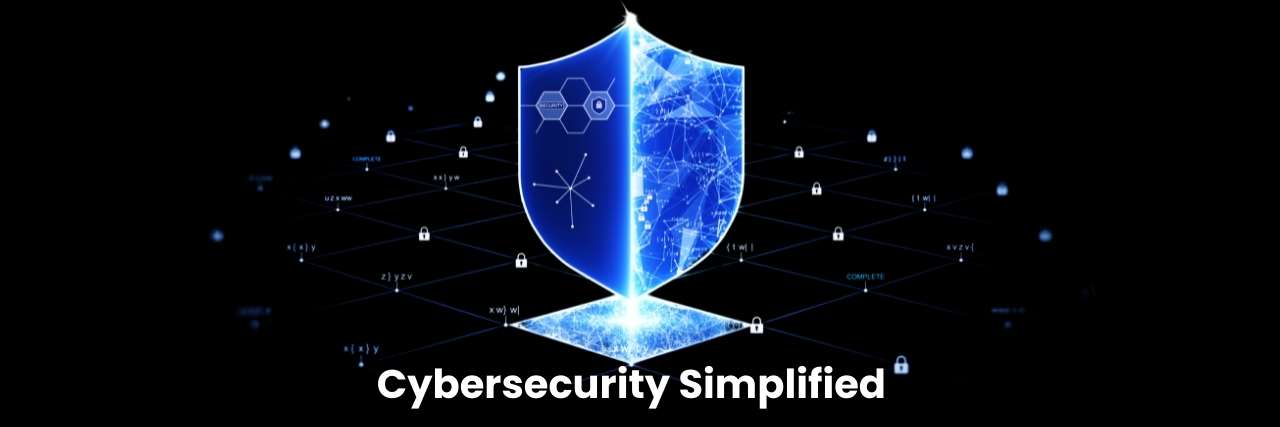Cybersecurity Simplified: 8 Basic Mistakes to Avoid
July 22nd, 2022 | 4 min. read

If the word cybersecurity strikes you with overwhelming feelings of confusion or anxiety, you're not alone. That's because many business owners like you don't really know where to start.
There are too many factors to consider, like what software to use, new cyber threats lurking around the corner, etc. It can all be a little too much. It shouldn't be. If you think about it, cybersecurity is all about keeping sensitive data away from prying eyes. That's it. And the only things that might be preventing you from doing that are a few simple mistakes.
At ITS, we offer managed IT services dedicated to helping businesses like yours secure your network and understand your tech in a way that makes sense to you.
In this article, we'll share our insights on the eight basic mistakes you might be making that could hinder you from your ultimate goal of protecting your data. Hopefully, after reading this article, you can get started on the right path of your IT security journey.
8 Basic Cybersecurity Mistakes
Most breaches happen because of oversight. It might sound harsh, but it's true. The most advanced security tools on the planet were designed with human error in mind. That's because no matter how sophisticated your tools are, a gaffe can undermine all of them. To help you avoid that scenario, check out the most common cybersecurity mistakes companies make:
1. Thinking You're Not a Target
Perhaps, the biggest blunder you can ever make regarding security is thinking no one is out to get you. Cybercriminals have you in their sights regardless of your company's size or what industry you're in. In fact, if you have yet to implement stringent security policies, an attacker could already be inside your network without your knowledge.
Why you, you ask? Because small to midsize businesses (SMBs) are low-hanging fruit, just ripe for the picking. Cybercriminals know that you don't have enough security in place, and they are aware that you are still trying to figure all of this out. Take a page from how predators hunt prey: they will always aim for the weak and the young.
2. Neglecting Patch Management

We've all done it at some point, clicking on that update later button. It seems innocuous. However, it could lead to some serious consequences. That's because updates aren't only about installing new features and fixing bugs; they also patch security gaps. Neglecting to install those vital patches can leave you open to a completely preventable attack.
Here's one example of just such a scenario: On March 15, 2022, the US government released a flash bulletin about an attack that targeted a non-governmental organization (NGO). According to reports, the hackers gained entry by leveraging an unused account in the network. Once they got in, they scanned the network for vulnerabilities and found a device unpatched for "PrintNightmare" (CVE-2021-34527). It was a critical vulnerability that Microsoft had already patched the year prior.
Neglecting to patch that machine allowed the cybercriminals to gain administrator privileges. That enabled them to access cloud storage and email accounts, and other desired content.
3. Running Outdated Tech
Your computer is still working fine; there shouldn't be any problems using something that isn't broken. Right? Unfortunately, there is. The manufacturer might no longer support outdated technology. Even if they still do, your devices might not be compatible with today's security technology. That means you might be deploying new cybersecurity solutions, but they simply won't work properly with your outdated tech.
Think about it, refusing to upgrade leaves you vulnerable. Like a straggler in a herd, you become an easy target. That could cost you much more than if you had just purchased a new device.
4. Not Implementing MFA

Multi-factor authentication (MFA) is one of the most impactful ways to safeguard your network from identity-related incidents. It allows you to keep many attackers at bay, even if they're able to compromise an account password. And the best part, it's cheap (sometimes free). Not implementing it across your organization is a huge missed opportunity.
5. Leaving Everything to Your IT Team
Yes, IT departments and IT support companies consist of highly capable individuals. However, cybersecurity is a team sport. Leaving all the responsibilities of securing your network to them only sets them up to fail. Get your entire organization into the game. Train your staff to think before they click and conduct periodic security awareness training.
Like we've said before, most breaches happen due to human error. Teaching people how to spot a suspicious activity can make a significant impact in preventing one from happening.
6. Using Misconfigured Security Tools

You might have the latest and greatest firewall, but if it's not configured properly, then it isn't worth much. Sophisticated security tools most often don't work well out of the box. It requires proper configuration and calibration so you can maximize its benefits. That's where an IT support company can help. A reliable managed service provider (MSP) can provide their expertise that will allow you to make the most of your technology.
7. Failing to Test Your Backup
Testing your backups seems like it should be common sense. Unfortunately, it's not as common as you would think, as many companies still fail to test their backups. Now consider that 77% of tape backups fail altogether, and you have a recipe for disaster.
Don't wait for a breach or an incident to see if your backups are working because by then, it would already be too late.
8. Believing the Work is Done

Another big misstep is believing that purchasing and deploying the latest security tools means your job is done and your network is secure. It doesn't work that way. Cybersecurity is an ongoing project. Keeping up with the latest practices and technology is the only way you can ensure it will keep your business safe.
Ready to Fix Your Cybersecurity Mistakes?
Cybersecurity shouldn't be that difficult. It's all about diligence and consistency. In fact, simply avoiding the following mistakes can already get you started on the right track to securing your network:
- Thinking you're not a target
- Neglecting Patch Management
- Running Outdated Tech
- Not implementing MFA
- Not training your team
- Failing to test your backups
- Believing the work is done
At ITS, we've helped hundreds of companies secure their networks. Learn more about getting started on cybersecurity for your small business. Check out our article entitled: What Businesses Need to Know About Managed Cybersecurity.
Mark Sheldon Villanueva has over a decade of experience creating engaging content for companies based in Asia, Australia and North America. He has produced all manner of creative content for small local businesses and large multinational corporations that span a wide variety of industries. Mark also used to work as a content team leader for an award-winning digital marketing agency based in Singapore.
Topics:
